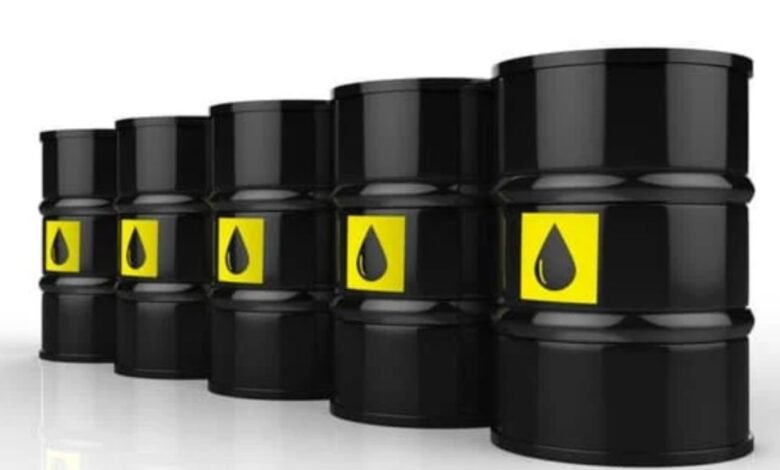OPEC+ says goodbye to its $100-a-barrel oil quest
OPEC+ abandons its $100-a-barrel oil target. Learn about the latest shifts in global oil strategies.

The Organization of the Petroleum Exporting Countries (OPEC) has recently made a pivotal decision to abandon its long-standing goal of achieving $100-a-barrel oil prices. This strategic shift marks a significant departure from the organization’s historical efforts to influence global oil prices. OPEC, a consortium of oil-producing countries, has traditionally played a crucial role in stabilizing the oil market by adjusting production levels to control supply and, consequently, prices.
Historically, the $100-a-barrel target was set during periods of high demand and economic growth, particularly in the early 2000s. During this era, oil prices soared above $100 per barrel, driven by rapid industrialization in emerging markets and geopolitical tensions that threatened supply chains. For OPEC, maintaining high oil prices was not merely about maximizing revenue; it was also about ensuring the sustainability of their economies, which heavily depend on oil exports.
However, the global oil market has undergone substantial changes in recent years, necessitating a reevaluation of OPEC’s pricing strategy. Several factors have contributed to this paradigm shift. Firstly, the advent of advanced technologies in energy production, such as hydraulic fracturing and horizontal drilling, has led to a surge in shale oil production, particularly in the United States. This increase in supply has exerted downward pressure on global oil prices.
Additionally, economic pressures, including fluctuating demand due to global economic uncertainties and the prolonged impact of the COVID-19 pandemic, have further complicated the market dynamics. The pandemic-induced economic slowdown led to a significant drop in oil demand, causing a supply glut and plummeting prices. Furthermore, the global push towards renewable energy and the transition to a low-carbon economy have also influenced OPEC’s decision-making, as countries worldwide are increasingly investing in sustainable energy sources.
In light of these multifaceted challenges, OPEC’s decision to abandon the $100-a-barrel oil quest reflects a pragmatic approach to adapting to the evolving energy landscape. By shifting focus, OPEC aims to maintain market stability and ensure the long-term viability of its member nations’ economies in a rapidly changing world.
Factors Influencing OPEC’s Decision
Several pivotal factors converged to influence OPEC’s decision to abandon the pursuit of $100-a-barrel oil. One of the primary drivers is the surge in oil production from non-OPEC countries, particularly the United States. The advent of advanced drilling techniques, such as hydraulic fracturing and horizontal drilling, has significantly boosted U.S. shale oil output, positioning the country as a formidable player in the global oil market. This increased production has injected a substantial supply into the market, exerting downward pressure on oil prices.
Another crucial factor is the rapid development and adoption of renewable energy sources and alternative fuels. The global shift towards greener energy solutions has progressively reduced the dependence on oil. Governments and corporations worldwide are increasingly investing in solar, wind, and electric vehicles to achieve sustainability goals. As these technologies become more cost-effective and prevalent, the demand for fossil fuels is projected to decline, compelling OPEC to reassess its price targets.
Economic pressures faced by member countries have also played a significant role. Many OPEC nations rely heavily on oil revenues to balance their budgets. However, the volatility of oil prices has underscored the need for more prudent fiscal strategies. By adjusting to lower oil price expectations, these countries can better manage their economies without over-reliance on high and potentially unsustainable oil prices.
The global events, notably the COVID-19 pandemic, have had a profound impact on oil demand and prices. The pandemic-induced lockdowns and travel restrictions led to unprecedented drops in oil consumption, causing a surplus and plummeting prices. This disruption highlighted the vulnerability of high price targets to unforeseen global events, thereby reinforcing the need for a more flexible and adaptive pricing strategy.
Pros and Cons of Maintaining $100-a-Barrel Target vs. Adapting to Market Conditions
Below is a table outlining the advantages and disadvantages of maintaining the $100-a-barrel target versus adapting to current market conditions:
| Maintaining $100-a-Barrel Target | Adapting to Market Conditions |
|---|---|
| Pros: – Higher revenue per barrel – Potential for greater economic leverage – Attraction of investment in oil exploration and production | Pros: – More stable and predictable revenue streams – Reduced market volatility – Better alignment with global energy trends |
| Cons: – Increased competition from non-OPEC producers – Higher vulnerability to market fluctuations – Economic strain on consumers and industries | Cons: – Potentially lower revenue per barrel – Need for structural economic adjustments – Possible impacts on national budgets and spending |
Implications for the Global Oil Market
The recent decision by the Organization of the Petroleum Exporting Countries (OPEC) to abandon its pursuit of $100-a-barrel oil marks a significant pivot in the global oil market landscape. The immediate implication of this move is a likely stabilization of oil prices at a lower threshold than previously targeted. Analysts suggest that prices may hover around $70 to $80 per barrel, offering a more predictable range for both producers and consumers.
For oil-producing countries, particularly within OPEC, this decision heralds a period of economic recalibration. Nations heavily reliant on oil revenues may need to adjust their fiscal policies to accommodate potentially reduced income. This could mean a heightened emphasis on economic diversification for countries like Saudi Arabia and Nigeria, which have historically depended on oil exports to drive economic growth.
Global consumers and industries that depend on oil are likely to experience a mixed impact. While stabilized prices can lead to more predictable operating costs for industries such as transportation and manufacturing, the absence of high oil prices might reduce the urgency for energy efficiency and innovation. However, this scenario could also translate into lower costs for consumers at the pump, indirectly boosting disposable income and consumer spending.
The decision also signals potential shifts in investment trends within the energy sector. As OPEC moves away from high-price targets, investors might increasingly turn their attention to renewable energy sources. This pivot could accelerate the transition towards sustainable energy, spurred by both economic and environmental considerations. Companies in the renewable energy sector may witness increased capital inflows, fostering innovation and expansion in solar, wind, and other green technologies.
- The Next Notcoin? Telegram-Based Game ‘Hamster Kombat’ to Launch Token on TON
- The Future of Work is Now: Embracing Remote Work and Hybrid Models
Key outcomes and predictions for the oil market include:
- Stabilization of oil prices in the $70-$80 range
- Economic recalibration for oil-dependent nations
- Potential for lower consumer costs and increased disposable income
- Increased focus and investment in renewable energy sources
Future Outlook and Strategic Adjustments
In the wake of OPEC’s decision to abandon the $100-a-barrel oil quest, the organization is poised to recalibrate its strategies to ensure market stability and support for member economies. One potential strategy involves bolstering production quotas to meet fluctuating global demands while avoiding market oversaturation. Additionally, OPEC may consider incentivizing investments in renewable energy sources among its members, gradually diversifying their economic dependencies away from oil.
Long-term trends in oil demand and supply suggest a nuanced trajectory. On one hand, emerging markets, particularly in Asia and Africa, are expected to drive up oil demand due to industrialization and urbanization. On the other hand, advancements in energy efficiency, coupled with the global push for cleaner energy, are anticipated to temper this demand. Consequently, OPEC’s challenge will be to balance these opposing forces effectively.
Technological innovation will play a pivotal role in shaping the future of energy production and consumption. Breakthroughs in extraction techniques, such as hydraulic fracturing and deep-water drilling, could enhance oil recovery and extend the longevity of existing reserves. Concurrently, the rise of electric vehicles and renewable energy technologies, like solar and wind power, will reshape consumption patterns, potentially reducing reliance on traditional hydrocarbons.
Moving forward, OPEC’s collaboration with other international bodies and oil-producing countries will be crucial. Strengthening alliances with non-OPEC producers, such as Russia, through mechanisms like the OPEC+ agreement, could help stabilize prices and manage supply more effectively. Moreover, engaging with global environmental organizations to align oil production practices with sustainability goals might mitigate some of the geopolitical and environmental challenges facing the industry.
In conclusion, as OPEC navigates this new landscape, its ability to adapt to changing market dynamics, integrate technological innovations, and foster international cooperation will be critical. The future of the global oil market will likely be characterized by a delicate balance between traditional energy sources and emerging renewable technologies, with OPEC playing a central role in this transition.



